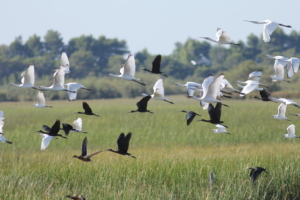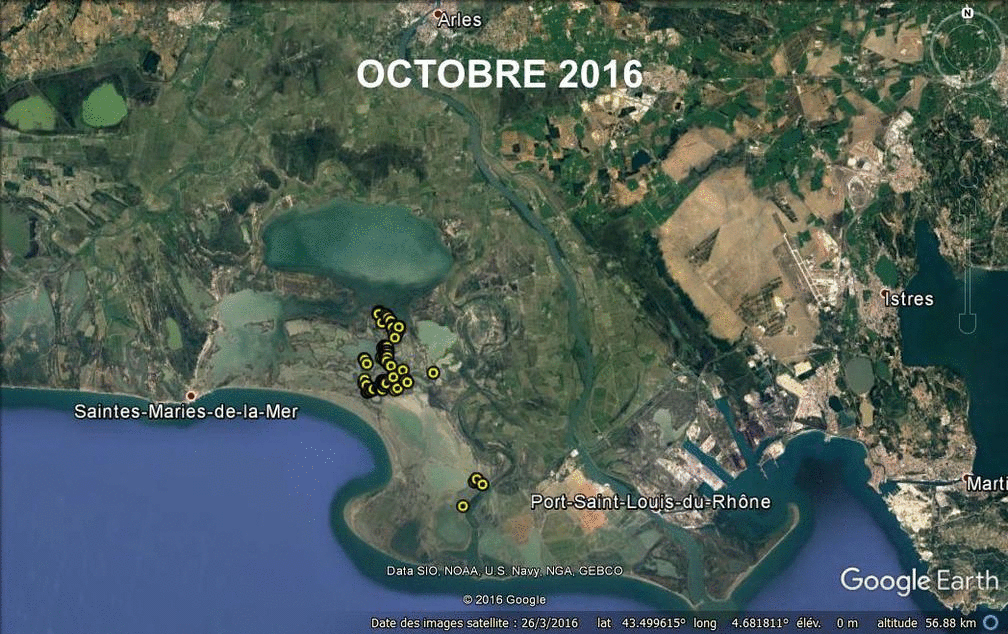The Eurasian Spoonbill (Platalea leucorodia) is a large wading bird 80 to 90 cm in length, and an adult weight of 1.7 to 2 kg. Its characteristic long, black, spoon-shaped beak makes it easy to identify, differentiating it from all other large European wading birds. Its plumage is completely white, with black legs. Juveniles, very similar in appearance to adults, can be distinguished by the black tips on their remiges (flight feathers). Spoonbills are typically dependent on wetlands and preferentially use freshwater marshes or the lagoons and estuaries just behind the coastal strip.
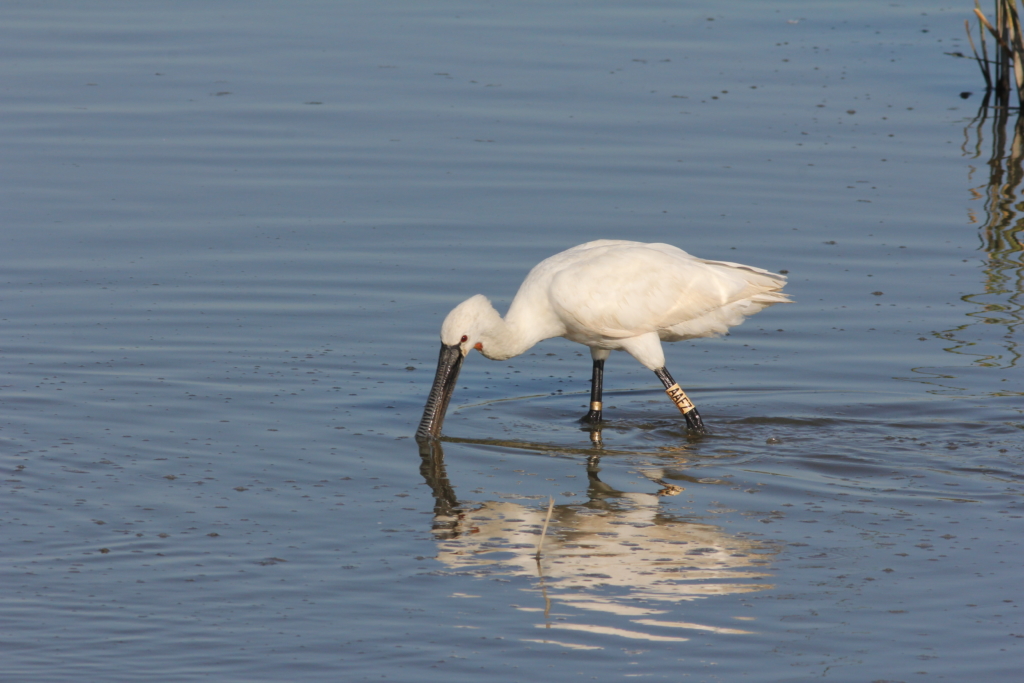 [1]
[1]Present in western Europe, where it nests from the spring onward in Spain, France, the Netherlands, and Belgium, it migrates in the autumn to overwinter mainly in the south of Spain, and in northern, eastern or western Africa. Individuals ringed in the Camargue have already been spotted in South Sudan, testifying to spoonbills’ long-distance migration capacities (see the article [2] and the map below).
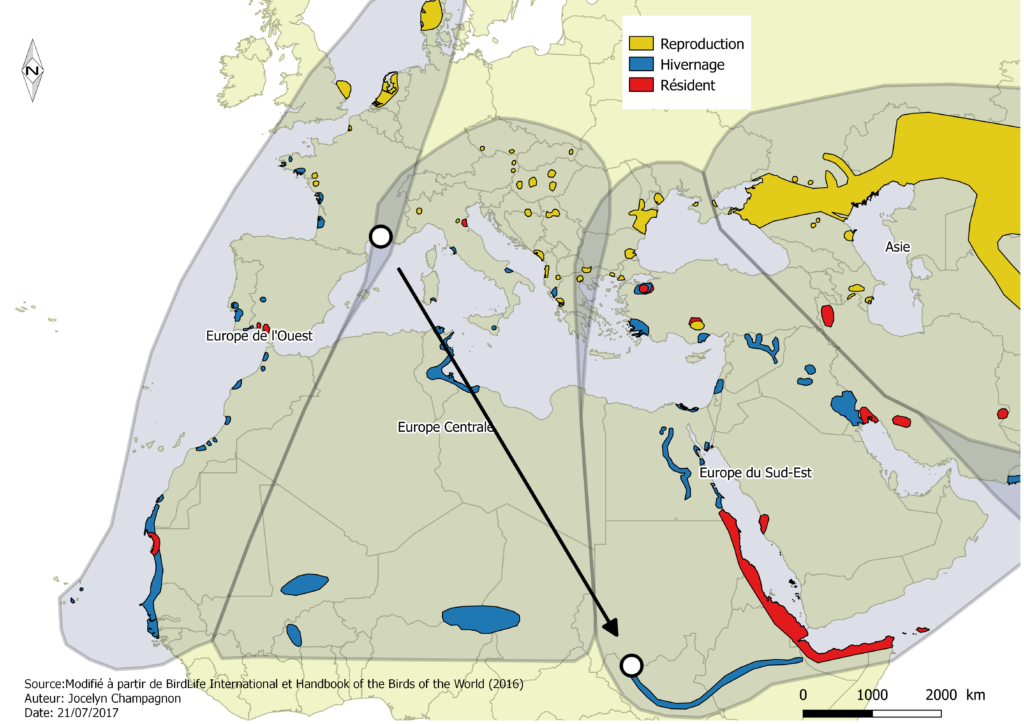 [3]
[3]The species is considered as vulnerable in France, and classified as such (VU) in the IUCN Red List. It is also mentioned in Annex 1 of the European Birds Directive, and since 2008 there has also been an international action plan for its conservation (see here [4]).
The threats faced by spoonbills vary significantly in function of the population and time of year. In the breeding season, the main problems are the inaccessibility or lack of nesting sites (generally due to the destruction of habitats), predation, and direct human disturbance of nesting or feeding sites.
History of the spoonbill population in the Camargue
Historically present on France’s Atlantic coast, the Eurasian Spoonbill was rare in the Camargue during the first half of the 20th century. Mayaud (1938) mentions only two sightings, in 1908 and 1936. The species remained an irregular visitor during the 1950s (seven sightings) and 1960s (nine sightings), then became regular in the 1970s, though still in low numbers, no more than five individuals (Blanchon. T et al, 2010). The species achieved annual visitor status in the Camargue starting in the 1980s, and then during the 1990s the number of sightings increased considerably (Blanchon. T et al, 2010). The first proven breeding record in the Camargue was in 1998 (Kayser et al, 2003). After that, the breeding population grew slowly at first (two pairs in 1998, and 30 in 2005) before accelerating (between 64 and 78 pairs in 2009, 130 in 2012). Today the spoonbill population in the Camargue seems to have stabilised at around 300 pairs (311 in 2017), which nest every year on the islets of the Vaccarès lagoon.
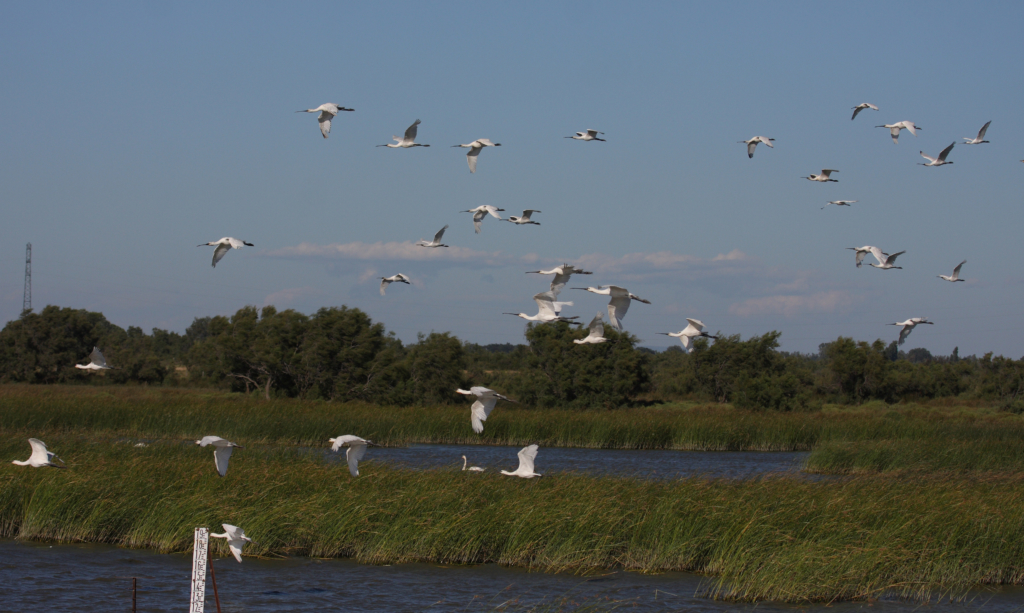 [5]
[5]The first ring identifications of the Camargue colony, carried out in 2008-2010, showed that the birds originated from populations in the Netherlands and Eastern Europe that were growing at that time.
The Tour du Valat’s Camargue spoonbill ringing scheme
Starting in 2008, the Tour du Valat set up a programme concerning the Eurasian Spoonbill population in the Camargue (see the “Eurasian Spoonbill Population Dynamics [6]” project). The monitoring consists in annually estimating the nesting population and capturing and ringing the chicks with field-readable tags.
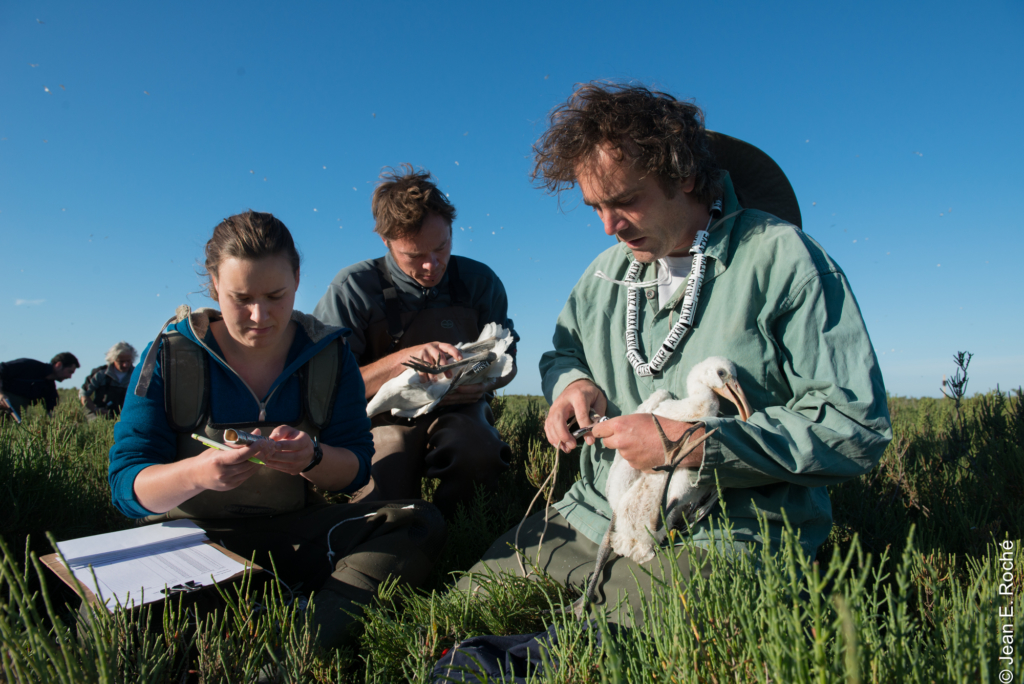 [7]
[7]In the framework of this programme, 2931 nestlings have been ringed since 2008, leading to more than 4600 sightings in Europe and Africa made by observers from around the world. Any birdwatcher can contribute to the database by reading a ring in the field (generally using a telescope), and then sending the information to the Tour du Valat (code, reading direction, place and date to be emailed to research technician Thomas Blanchon (e-mail [8])).
The ringing scheme is supervised by the French bird ringing management organisation of the National Natural History Museum, the CRBPO [9]. It has the following objectives:
- Determining the flows between different breeding populations,
- Determining the species’ particular demographic parameters and the influence of environmental factors on those parameters at local population level,
- At the individual level, studying life strategies in function of individual parameters, for example, which of the various migration routes is chosen between Europe and Africa.
Concerning this final point, the research currently being conducted aims tot understand what guides the spoonbills in their migratory choice when there are three strategies available to them: 1) staying in the Camargue, 2) wintering in Spain or Mauritania by way of the western-Atlantic migration route, or 3) wintering in Italy or Tunisia by taking the central-Mediterranean migration route (see article [10] in French).
GPS tags, a major technological advance for improving knowledge about spoonbills
In addition to regular bird ringing, since 2016 six Camargue spoonbills have been fitted with GPS tags that emit a regular signal via the GSM network (see article [11] in French). Thanks to these new technologies, it has been possible to:
- Determine how the Camargue area is used during the breeding season,
- Monitor the autumnal and prenuptial migrations of two adults to the south of Spain for one individual (see article [12] in French) and as far as Gambia for the other (see map below),
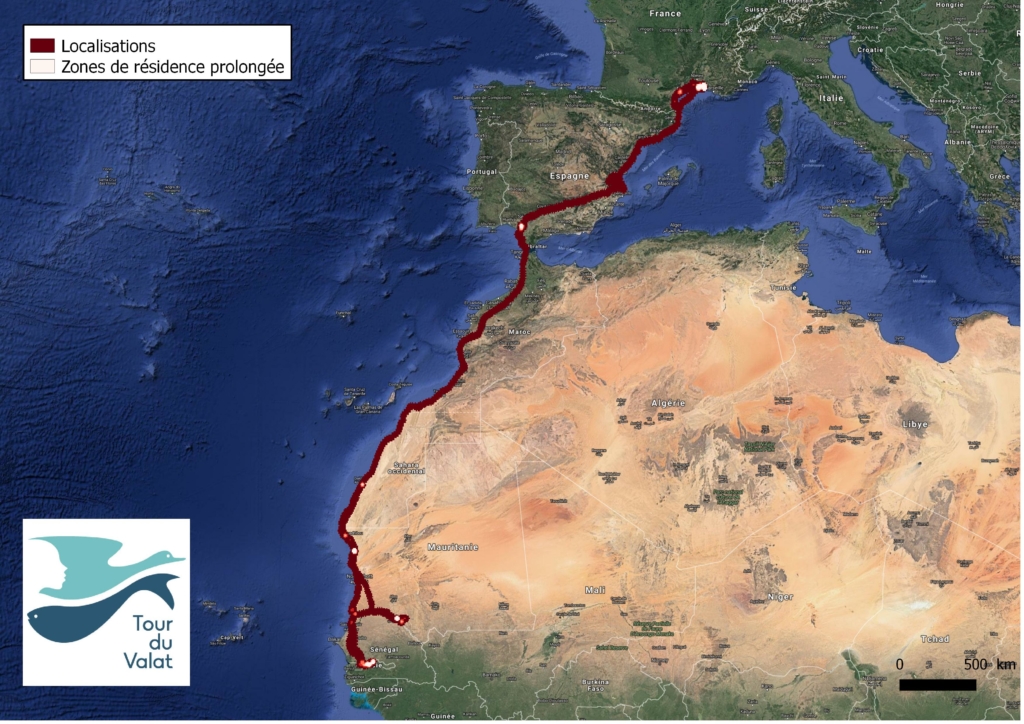
- Reveal the movements of a young spoonbill during its first two years in the Camargue. It mainly used an isolated and inaccessible area in the heart of the Camargue National Natural Reserve [13] (see map below).
As well as its scientific objective, the use of GPS tags has enabled us to pursue an educational objective through awareness-raising with school children in Le Sambuc, a village close to the Tour du Valat, also situated in the heart of the Camargue, by showing them the movements of tagged individuals in real-time. The project was carried out in 2017 in collaboration with the Fondation Nature et Découvertes [15]. Another awareness-raising session was held in Villeurbanne (Lyon area), with children who had grown up in an urban environment. All the children showed great interest in this emblematic bird. This interest among young people in the exceptional species around them, such as the Eurasian Spoonbill, contributes directly to their understanding and knowledge of nature in general, and wetlands in particular.
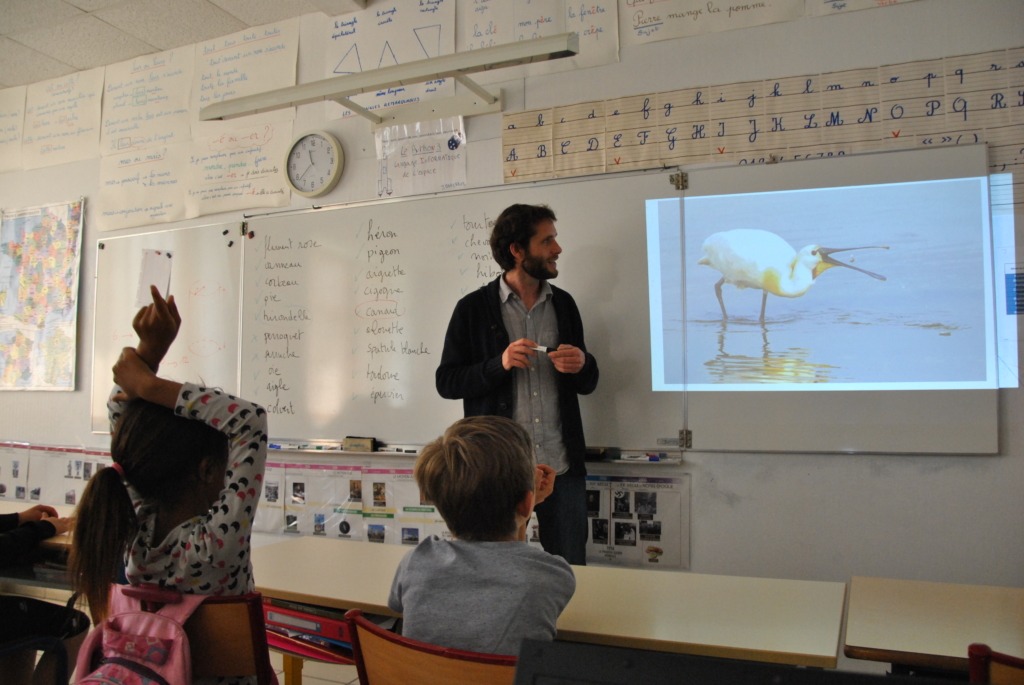 [16]
[16]9th international workshop on the Eurasian Spoonbill, November 2018, Tunisia
The Tour du Valat’s Eurasian Spoonbill programme is set up within the framework of the AEWA international expert group devoted to the species. The AEWA [17] (African-Eurasian Migratory Waterbird Agreement) is an international agreement between 77 African and European countries concerning the conservation of migratory waterbirds.
The group of experts on the Eurasian Spoonbill entitled the ESIEG [18] (Eurasian Spoonbill International Expert Group), created in 1991 to combat the decline of the species, has been coordinated by the Tour du Valat since 2016. Every three years, the expert group organises a workshop to assess results and discuss the orientations of the international action plan for the species (see the article [19] in French about the 8th workshop in November 2015 at the Tour du Valat).
The 9th workshop will be held in Djerba, Tunisia, from 14 to 18 November 2018, in collaboration with the Association Les Amis des Oiseaux [20], a partner of Birdlife in Tunisia (further information [21]).
In addition to the conservation of the species and its associated wetlands, the meeting of the expert group can lead to the emergence of local leaders for waterbird conservation in each country where the species is found, particularly the countries of North Africa, the Balkans, and the Middle East. The last workshop took place at the Tour du Valat in 2015, and brought together 35 scientists and managers from 17 different countries.
This year, as well as a contribution from each participant on the situation of the species in his/her country, discussions will be organised to:
- Assess the current migration routes and document recent changes,
- Improve knowledge about the conservation status of the subspecies P. leucorodia archeri and balsaci, which are restricted to the Red Sea and Mauritania,
- Discuss the continuation or modification of the international action plan validated in 2008,
- Share the knowledge about the Eurasian Spoonbill acquired through GPS trackers deployed in many countries in recent years.
